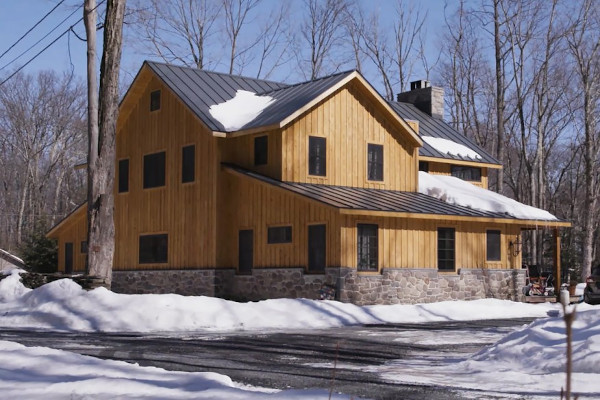Original article by: BUILDER Online
A New York mountain home demonstrates the complementary value propane heating and standby generators can provide.
Jeremy Mirto has a straightforward business plan.
“We try and stick to the things we are very good at,” says Mirto, owner of Reliable Energy Solutions in Kerhonkson, New York. Those services are in high demand in his Hudson Valley market: heating systems, propane systems, and ductless heating and cooling. But about half of his business is attributed to standby generators, a product that’s an ideal complement to his other offerings.
Standby generators work in tandem with propane heating systems both from a business perspective and in terms of optimizing a generator’s performance and upfront cost. On the business side, Mirto frequently sees propane generator projects open the door to other upgrade opportunities in the home and vice versa.
That was the case at the Boyd residence, a project in rural Gardiner, New York, where Mirto was hired by the contractor to install a propane radiant heating system that also provides domestic hot water. During the installation, Mirto had the home prepped with propane lines for a future standby generator installation, and a year later, the customer returned to complete the installation. Check out the video below to see how the home’s sophisticated propane heating system makes it easier to optimize cost savings by installing a right-size propane generator.
Generators keep the heat and the internet on
The Boyd family was a great candidate for a propane standby generator both because of the frequency of outages in their area and the needs of their home. “This particular customer I would estimate to lose power at least 10 times a year,” Mirto says. “He’s on top of a mountain. The wind blows quite frequently here. Lots of storms, lots of snow. So the need for a standby generator in this particular area is a lot higher than the average person that’s on the beaten path.”
Furthermore, the client has been working from home during the pandemic, adding power for his computer and Wi-Fi to the list of necessities in need of protection. “His heating system runs on propane, but it also requires electricity to operate,” Mirto says. “The standby generator keeps the heat, the hot water, and the well pump online during a power failure, as well as his internet service for his work.”
Designing the home’s heating and hot-water systems around propane does make it easier to save on installation costs by installing a smaller generator than would be needed for a home with electric heat. Propane boilers, for example, use around 3 amps, depending on how many pumps they have. Gas ovens use only a tiny amount of electricity for the ignition sequence.

Overall, the project demonstrates the value pros can provide by assessing the needs of their clients and offering opportunities to make upgrades that improve a home’s comfort and performance. Visit propane.com to learn more about this project and how offering complementary propane systems can lead to ongoing business opportunities.

